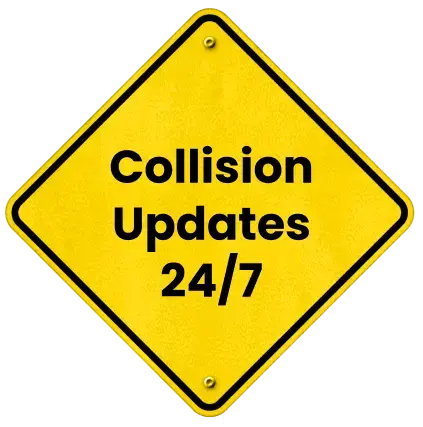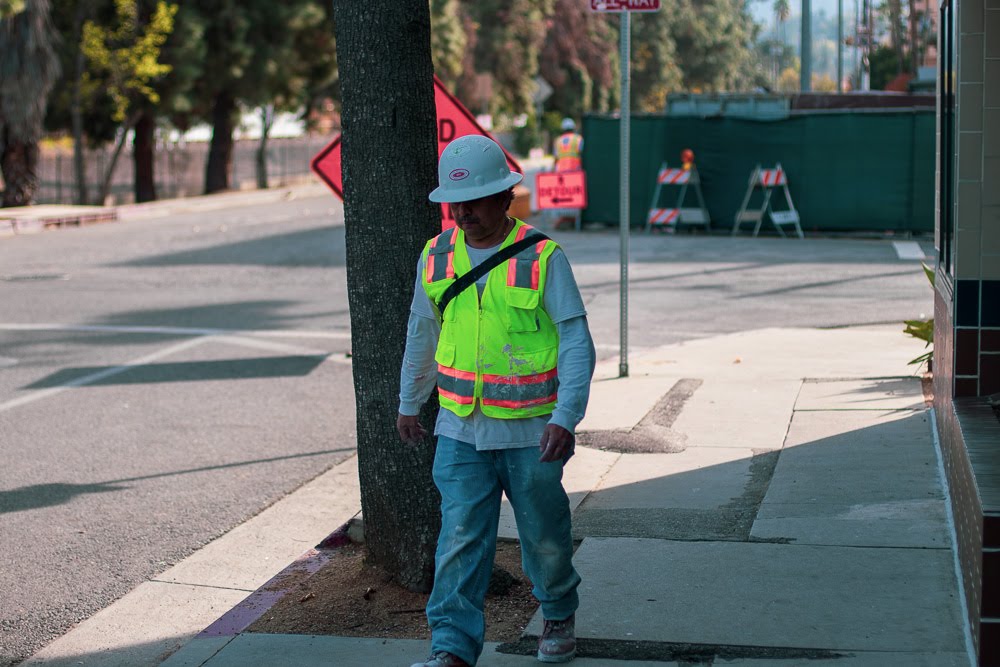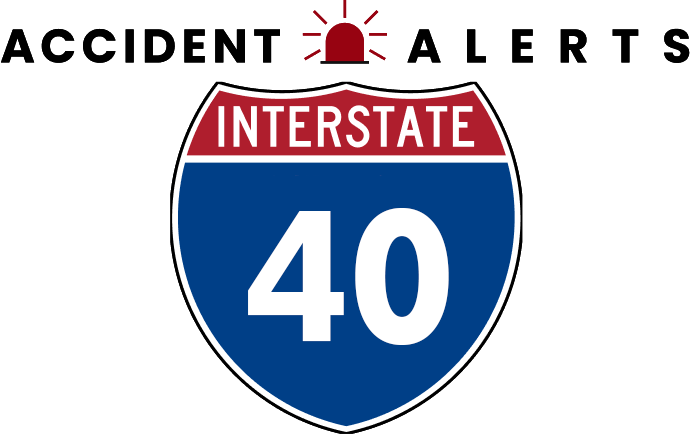
Construction Zone Crashes on I-40: Who’s Liable?


Driving through construction areas on Interstate 40 can be stressful, especially when lanes are narrowed, workers are present, and traffic is unpredictable. Construction zones are among the most dangerous sections of interstate highways, and I-40 is no exception. With heavy truck traffic, high travel speeds, and long stretches of active construction, accidents in these zones are frequent and often severe.
Understanding liability after a work zone crash on I-40 is not always straightforward. Unlike a standard traffic accident, these collisions can involve multiple parties, from negligent drivers to contractors and even government agencies. Victims may face weeks or months of recovery while also battling complicated insurance claims and liability disputes.
Why Construction Zones Are Especially Dangerous on I-40
Construction zones create sudden and sometimes confusing changes to driving conditions. Lane reductions, abrupt merges, and reduced speed limits are common. Many drivers ignore posted signs or fail to slow down, which can lead to rear-end collisions, sideswipes, or multi-vehicle pileups. The risk is especially high in high-traffic sections of I-40 near Memphis, Little Rock, Oklahoma City, Albuquerque, and Flagstaff.
According to the Federal Highway Administration, work zones nationwide account for thousands of serious crashes every year. With I-40 stretching across rural highways and busy urban corridors alike, its work zones combine high traffic volumes with complex construction activity, heightening risks for drivers and workers. Construction areas also pose unique hazards at night, when visibility is low and fatigued drivers are more likely to make mistakes.
Common Scenarios Leading to Work Zone Crashes
Although every collision is unique, I-40 construction crashes often fall into a few predictable patterns:
- Rear-end collisions when traffic slows unexpectedly.
- Sideswipe accidents during abrupt lane shifts or merges.
- Striking construction vehicles or equipment, entering or leaving the roadway.
- Worker injuries caused by inattentive or speeding drivers.
Even a “minor” crash in these zones can have outsized consequences. A rear-end accident at reduced speed can trigger chain reactions, while sideswipe collisions often push vehicles into concrete barriers or directly into construction crews.
Who Can Be Held Liable After a Work Zone Crash
Assigning liability for a freeway liability case in a construction zone often requires examining multiple potential sources of fault.
Sometimes, the driver is solely responsible, for example, if they were texting, speeding, or driving while impaired. In other cases, the construction contractor may share fault if signs were missing, barriers were poorly positioned, or safety protocols were ignored. Government agencies could also be liable if the project design was unsafe or if contractor oversight was inadequate.
Liability disputes in construction zone crashes can become highly technical. Accident reconstruction experts may need to determine whether lane markings were visible, whether speed reduction signs were posted far enough in advance, or whether the contractor complied with federal safety guidelines.
Frequently, liability is shared. A driver may have been distracted, but the construction site may have been confusing or improperly marked. In such cases, comparative negligence laws determine how fault is divided and how damages are awarded.
Insurance Claims and Evidence Challenges
Insurance companies investigate construction zone crashes carefully because multiple parties may be responsible. Claims often involve not only the drivers but also contractors and, in rare cases, government agencies. This makes documentation critical. Photos of signage, barriers, and traffic patterns can be essential evidence. A police report is also important, as it provides an objective record of conditions at the time of the crash.
For injured victims, pursuing compensation may involve navigating multiple insurance policies. The driver’s liability insurance, the contractor’s commercial liability coverage, and possibly a municipal or state agency policy could all come into play. This complexity is one reason why many victims choose to work with an attorney who understands construction zone liability.
The Hidden Costs of Work Zone Accidents
Beyond immediate injuries and vehicle damage, work zone crash I-40 victims often experience lasting consequences. Medical bills for surgeries, physical therapy, and rehabilitation can quickly escalate. Lost wages and reduced earning capacity can create long-term financial strain. Psychological trauma is another factor; being involved in a high-stakes crash in a narrow, confined construction zone can leave victims with lasting anxiety about highway driving.
Families may also face the loss of companionship, household income, or support if the accident leads to permanent disability or wrongful death. These damages are not always obvious at first, but must be considered when pursuing fair compensation.
Staying Safe in I-40 Work Zones
While not every crash can be avoided, drivers can significantly reduce their risk by adjusting their behavior when entering work zones.
- Slow down early as soon as warning signs appear.
- Stay focused by eliminating distractions and watching for flaggers.
- Leave extra space to reduce the likelihood of rear-end collisions.
- Be patient — aggressive driving in work zones greatly increases the danger.
The National Highway Traffic Safety Administration emphasizes that attentiveness and compliance with reduced speed limits are the most effective ways to keep both motorists and workers safe. Even small changes in behavior, like turning on headlights in twilight conditions or keeping both hands on the wheel, can make a significant difference.
What to Do After a Crash in an I-40 Construction Zone
If you are involved in a crash, your immediate priorities should be safety, medical attention, and proper documentation. Call 911 right away, move to a safe location if possible, and check for injuries. Gather evidence by taking photos, collecting contact information from witnesses, and requesting a copy of the police report. Once the situation is stable, notify your insurance company and consider speaking with an attorney about your rights.
It is also important to avoid admitting fault at the scene. Construction zone crashes can involve many contributing factors, and what seems like driver error may actually be the result of poor signage or unsafe site design. Allow investigators and attorneys to fully examine the circumstances before determining liability.
The Role of Attorneys in Construction Zone Crash Cases
Because construction zone accidents often involve multiple parties and insurance companies, injured victims may struggle to handle claims on their own. Attorneys play a critical role by:
- Investigating whether contractors complied with safety standards.
- Identifying all potentially responsible parties.
- Preserving evidence before it disappears (such as temporary signs or barriers).
- Negotiating with insurance adjusters on behalf of victims.
- Representing clients in court if litigation becomes necessary.
Legal guidance is especially valuable in cases involving catastrophic injuries or fatalities, where damages extend far beyond immediate medical bills. By ensuring all factors are considered, attorneys help victims secure compensation that truly reflects their losses.
Protect Your Rights After an I-40 Construction Accident
Navigating liability in a construction zone crash can be overwhelming, particularly when multiple parties are involved. If you or a loved one has been injured in a work zone crash on I-40, experienced legal guidance can make the difference between a denied claim and full compensation. An attorney can investigate the scene, identify all potentially responsible parties, and pursue damages on your behalf.
To learn more about your legal options, get in touch with us today by filling out the contact form to arrange a free case consultation. You don’t have to wait to protect your rights; we can get you the support you need.
